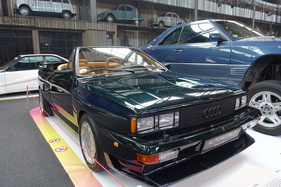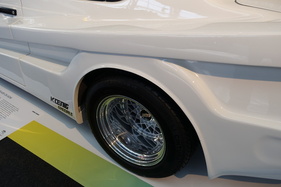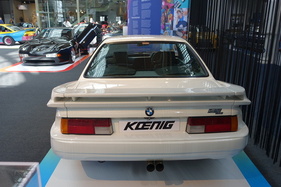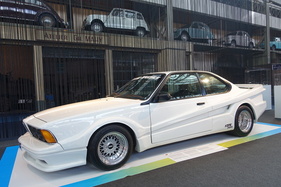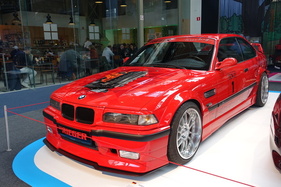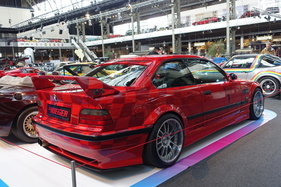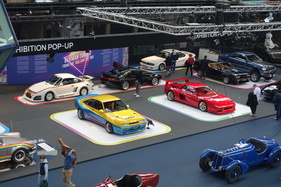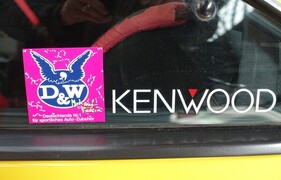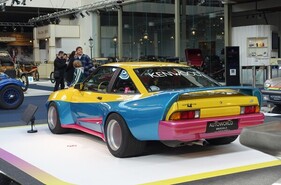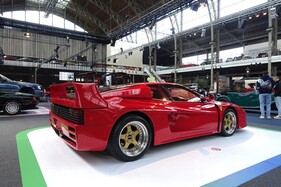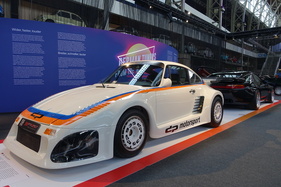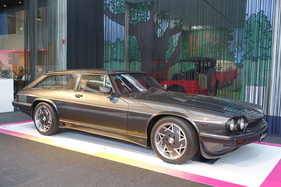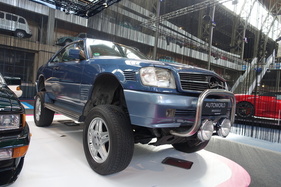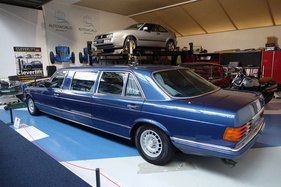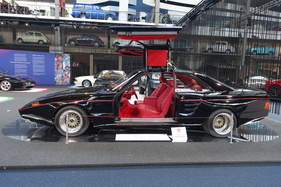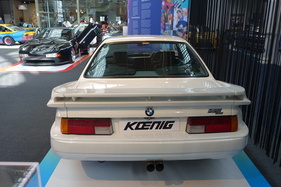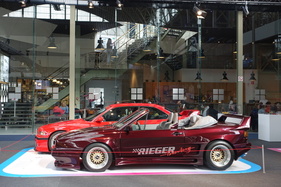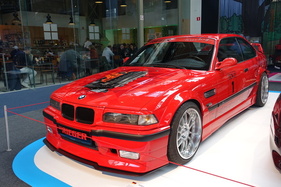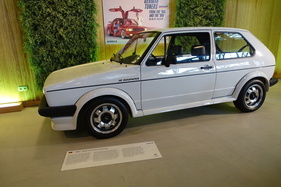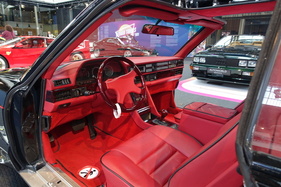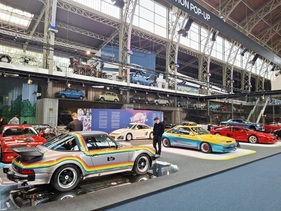The author of these lines is not aware of any renowned museum having dedicated a separate exhibition to the subject of "tuners of the eighties and nineties" to date. Well, Autoworld Brussels has done just that. Limited to German tuning companies, more than a dozen exemplary automobiles are presented. The mere mention of the company names Mattig, Koenig or Rieger will probably trigger associations with certain vehicles in some readers. Others will probably turn up their noses.
Yes, some cars from back then were polarizing, taste boundaries were excessively crossed and a Manta B with a Testarossa look, for example, was quite extreme. Some people will probably still remember the offerings in the D & W catalog, such as the colorful leather steering wheels, colored speedometer dials, spoilers, etc. Presumably also the contemporary, largely textile-free presentation of the products. Back then, anyone interested in cars could hardly avoid this printed work. But all that was decades ago and is now part of automotive history.
Seemingly limitless
So let's plunge back into those wild times when tuning possibilities were seemingly limitless and immerse ourselves in this small, remarkable special exhibition. We are greeted directly at the entrance by the "Rainbow Porsche" from bb- Design from 1976. This Turbo Targa, which was not available in the technical configuration from the factory, with the identity-forming colors of the Polaroid company was once known like the proverbial colorful dog. In the German-speaking world, this certainly also applies to the wide and extremely colorful Opel Manta B from 1987 in the Mattig livery, the protagonist of the "Manta Manta" films. Such a car is of course not missing in Brussels.
The Lotec TT 1000 from 1991, a Ferrari Testarossa whose engine power was boosted to 1000 horsepower by means of two turbochargers, is in a different league.
Back to Porsche once again. The white 935 from dp from 1986 shown here is based on a 930 turbo. Although it has the contours of a "911" Porsche, on closer inspection there is not much to be found from the series inside and out.Yes, flat construction was as much in demand back then as the optical backdating of the Singers, Urban Outlaws or Sportec Porsches of this world is today.
All show or some substance
The 1989 AJ 3 developed by Arden is immediately recognizable as a Jaguar, but the tuner was not interested in a wild appearance. Instead, a shooting brake with a V12 engine was created on the basis of the Jaguar XJ-S. Even though it may have been based somewhat on the Lynx Eventer, the sporty and elegant car is successful from every angle and would have fitted well into the manufacturer's portfolio at the time. Arden also supplied technical upgrades such as ABS for the XJ Series 3 and a 5-speed gearbox from Getrag for the 12-cylinder models.
Elegant, that's not really the case with two exhibits from Schulz Tuning. On the one hand, Autoworld presents the "Big Foot" off-road coupé - a mixture of Mercedes-Benz C124 and G-model, which was once built for a sheikh.
On the other hand, a Pullman limousine of the Mercedes-Benz W 126 type, also extended by Schulz, is almost seven meters long.
On the other hand, the Arrow 1 from SGS (Styling Garage) is no longer recognizable as a Mercedes 126 coupé. With its gullwing doors, "flat nose" at the front and sides reminiscent of the Ferrari Testarossa - undoubtedly one of the leading tuning design objects of the 1980s - this creation by Chris Hahn was probably aimed at customers from the Arab world and is miles away from series production.
The companies Strosek and Koenig Specials are also known for their visually unobtrusive modifications. Autoworld is showing the Ultra Wing Porsche 928 GTS from 1993 with scissor doors from Strosek. Koenig is not represented here with a Ferrari, but with one of two heavily modified BMW K 635 CSI (E 24 series).
As expected, it is widened and "spoilered". As many as 40 of the Treser Quattro Roadster were built. One of them, from 1983, is on display in Brussels. It is, so to speak, the car that Audi did not build itself: an open-top sports car with all-wheel drive and an electrically operated hardtop.

The Bavarian company Rieger mentioned at the beginning is represented with two cars. The formula "Lower, wider, Rieger" seems to be embodied by the widebody and conversion to a Volkswagen Scirocco II 2.0 convertible.
The BMW M3 from 1992, which Rieger reworked nine years later, is visually much more restrained.
Visitors who pay a brief visit to the "Bagnole" museum brasserie at the end of their tour can look forward to another automotive delicacy: A white Golf I 16 S Oettinger from 1982. The Golf GTI tuned by Oettinger was officially offered by VAG France and was produced in a series of 1250 units, which was almost huge by tuner standards. Its output was 136 hp thanks to 16 V technology. And because "valve" means "soupape" in French, it was logically marketed as the "16 S".
There would certainly have been more exciting cars and tuning companies. But the special merit of the exhibition organizers is to have taken up the topic at all. For visitors who experienced this wild time themselves, this may have set off a mental movie. Younger visitors may be surprised at all the possibilities that were possible back then, beyond mass production, true to the motto: "There's no such thing as impossible".
And: even companies like AMG, Brabus or Alpina started out small. Why they are recognized greats today and others are not would be a topic in itself. In any case, the reporter will perhaps leaf through his old D & W catalogs again.
Further information on the exhibition "German Tuners from the 80s and the 90s", which is on display at Autoworld Brussels until December 14, 2025, can be found on the museum's website.



















































































